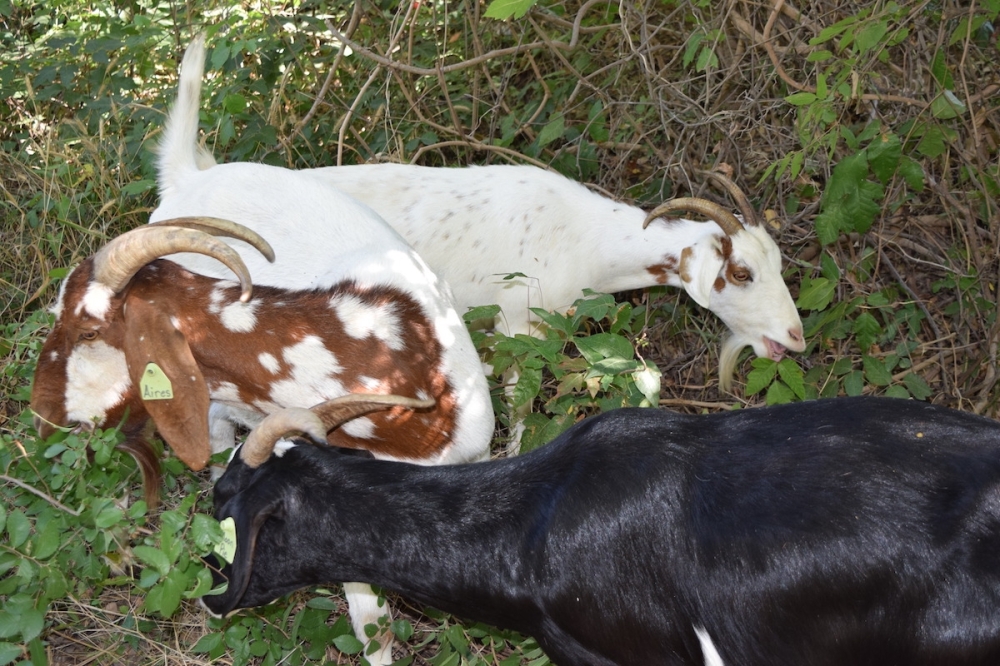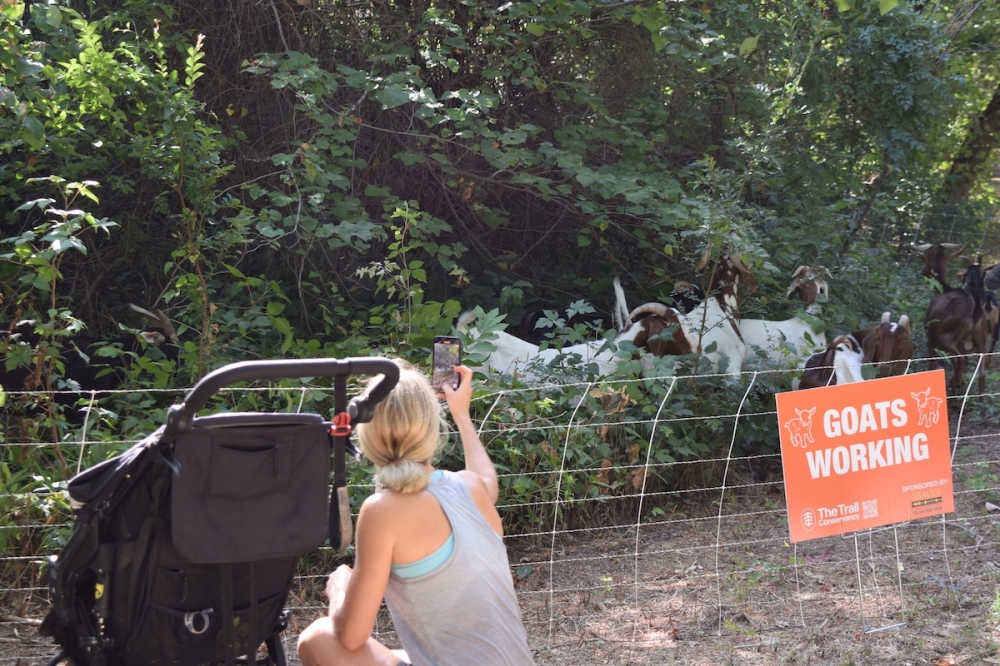In a nutshell
Spearheaded by The Trail Conservancy, a nonprofit whose members work to protect, enhance and connect the trail for the benefit of everyone, this is a pilot program to eradicate invasive plants—especially poison ivy—without the use of chemicals or heavy machinery.

Zooming in
TTC Executive Director Heidi Anderson said choosing to bring the goats to the trail is the best, most environmentally sound option for vegetation management in the area.
Anderson said some of the benefits of using goats include:
- Protecting the native plants in the areas along the trail and lake
- Removing poison ivy and other noxious plants that would be challenging for humans to remove
- Preventing the spread of chemicals that may have otherwise been used
- Decreasing the risk of wildfires developing
- Reducing the risk of visitors getting a rash from poison ivy
- Increasing sightliness for visitors
The goats were herded in by Carolyn Carr, co-owner of Rent-A-Ruminant Texas. Carr has made it her mission in life to provide an eco-friendly vegetation management solution for property owners.
Carr said she and her partners started the company after acquiring a large ranch in Texas.
“I thought if we have a need for a way to handle the vegetation without chemicals or large machinery, surely other people do, too,” Carr said. “Keep in mind that goats have four-hoof drive, so they can go up and down terrain where we just cannot go with lawnmowers or brush cutters.”
Zooming out
The goats will stay at the trail day and night for the next three to four weeks, taking breaks to chew their cud and sleeping in their on-site trailers. Guests of the trail should not be affected, Anderson said, as the goats will remain in the vegetation and not on the dirt path.
Those visiting are asked to keep their pets on leashes and not touch the goats or the electric fencing while they work.
“It's a little like being around a working therapy dog,” Anderson said. “It's very tempting to want to pet them, but we ask that you do not do it.”

Anderson said she hopes once word spreads about the goats at the trail, TTC will be able to secure funding to continue the program throughout the trail. Additionally, she said when the goats have finished their work, TTC will use heavy mulch to prevent the germination of invasive plants in the future, and will replant the areas with native plants during the fall and winter months.
Get involved
As a local nonprofit organization, TTC depends largely on its members, volunteers and sponsors to continue its mission of maintaining and beautifying the environment along the trail. Anderson said there are several ways to help TTC accomplish its goals, including:
- Members: Memberships range from $1-$25,000-plus annually, and can be made as a one-time gift or by becoming a sustaining member.
- "Members are essential to TTC because their contributions fill funding gaps. We have several yearlong membership tiers available," Anderson said. "Or by simply donating any amount, you'll automatically become part of our community of members."
- Volunteers: Individuals, businesses, corporations and community groups are invited to volunteer throughout the year.
- "Volunteers amplify our efforts to improve the trail by helping to weed, collect seeds, remove invasive plant species, pick up litter and support other ecological activities," Anderson said. "We also have corporate volunteer opportunities available for large groups. Volunteer opportunities are posted on our website."
- Sponsors: TTC offers several sponsorship opportunities which can include companies, individuals, businesses and foundations.
- "Corporations can give back to the trail in a special way," Anderson said. "Sponsor or co-sponsor a project or event such as our annual gala, Twilight on the Trail, which will be on Nov. 5."
- Tip the Trail: The trail is free for anyone to use; however, a $1 donation is appreciated and can go a long way, Anderson said.
- "With over 5 million visits every year, imagine what we could accomplish if everyone tipped $1 each time they visited the trail," Anderson said.

The 10-mile trail winds through trees and bridges along the shores of the Colorado River and stretches from the Tom Miller Dam on the west side to the Longhorn Dam on the east side. To find out more about the trail or trail etiquette, visit the TTC website or call 1-855-448-7245. Click here to view a detailed map of the trail.





